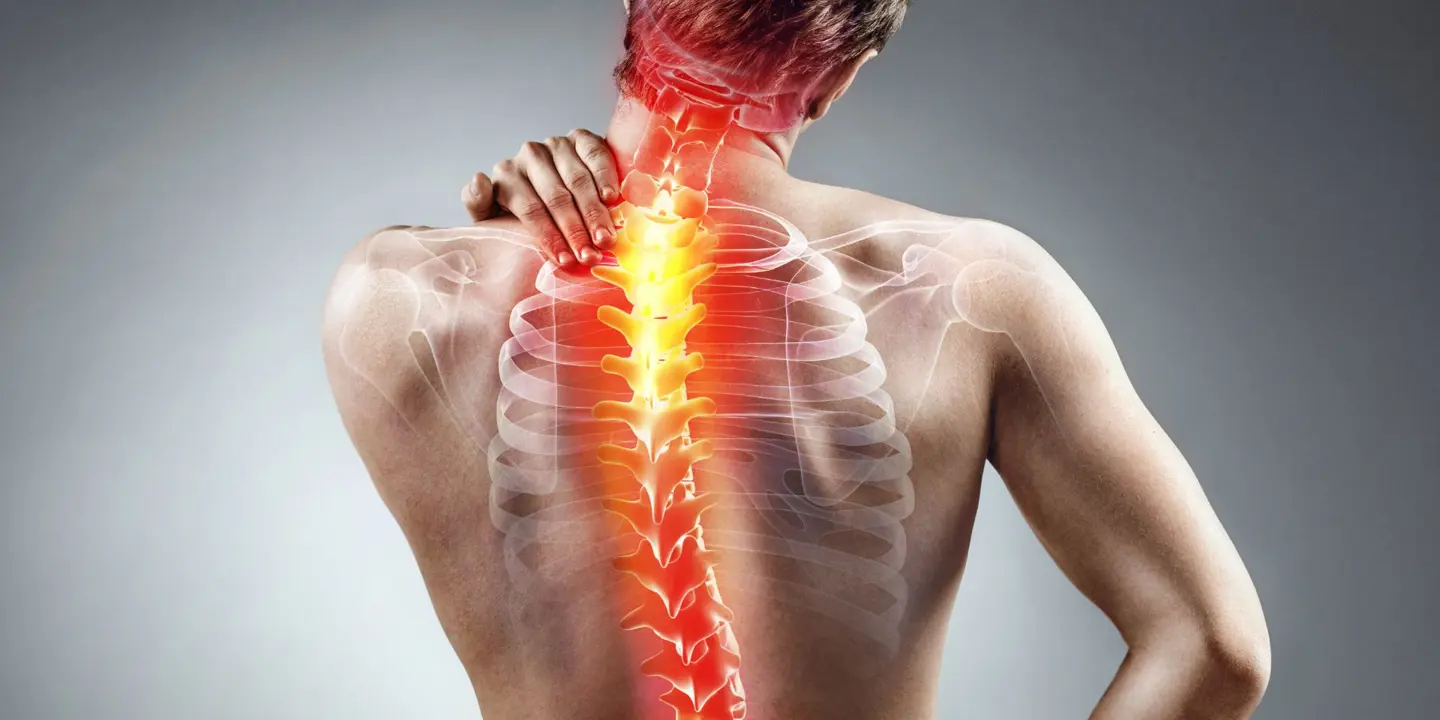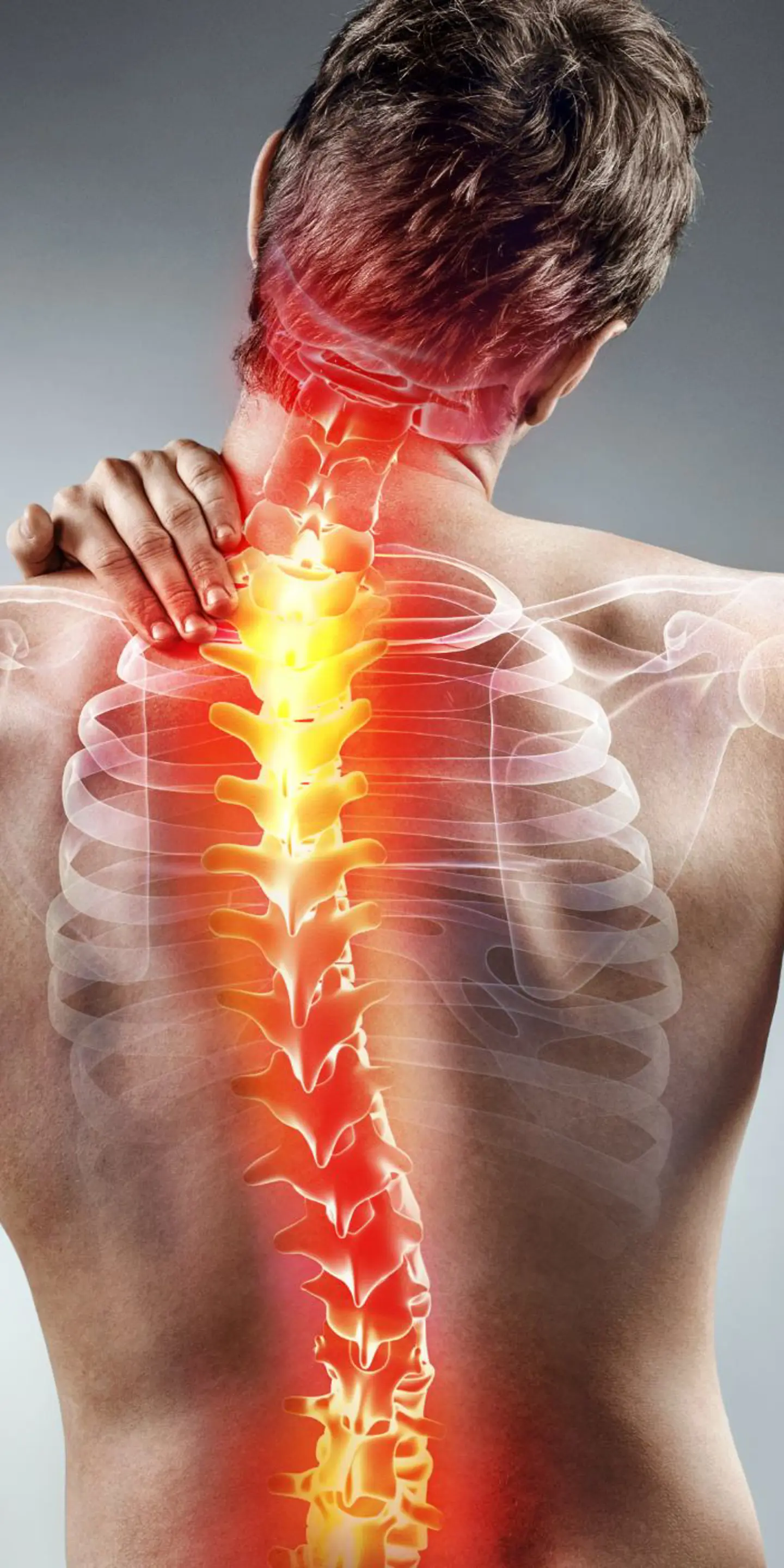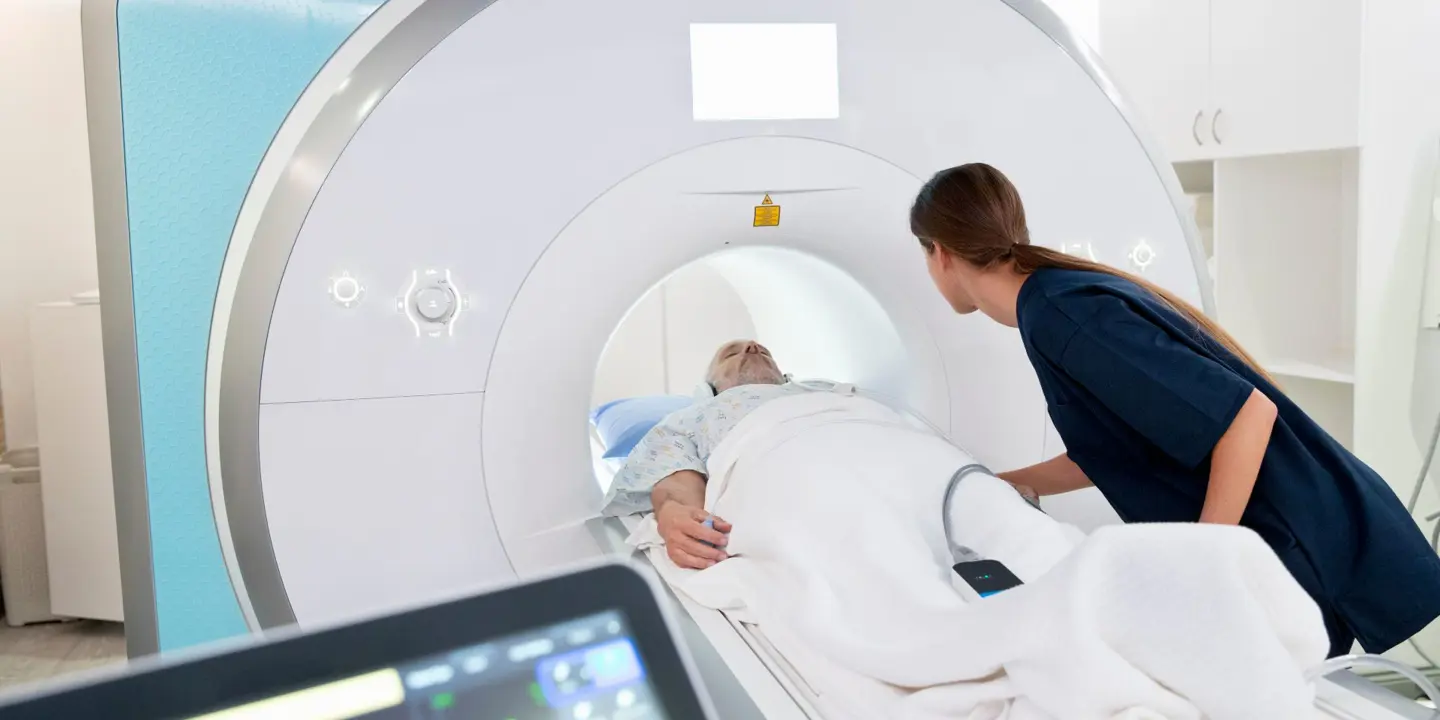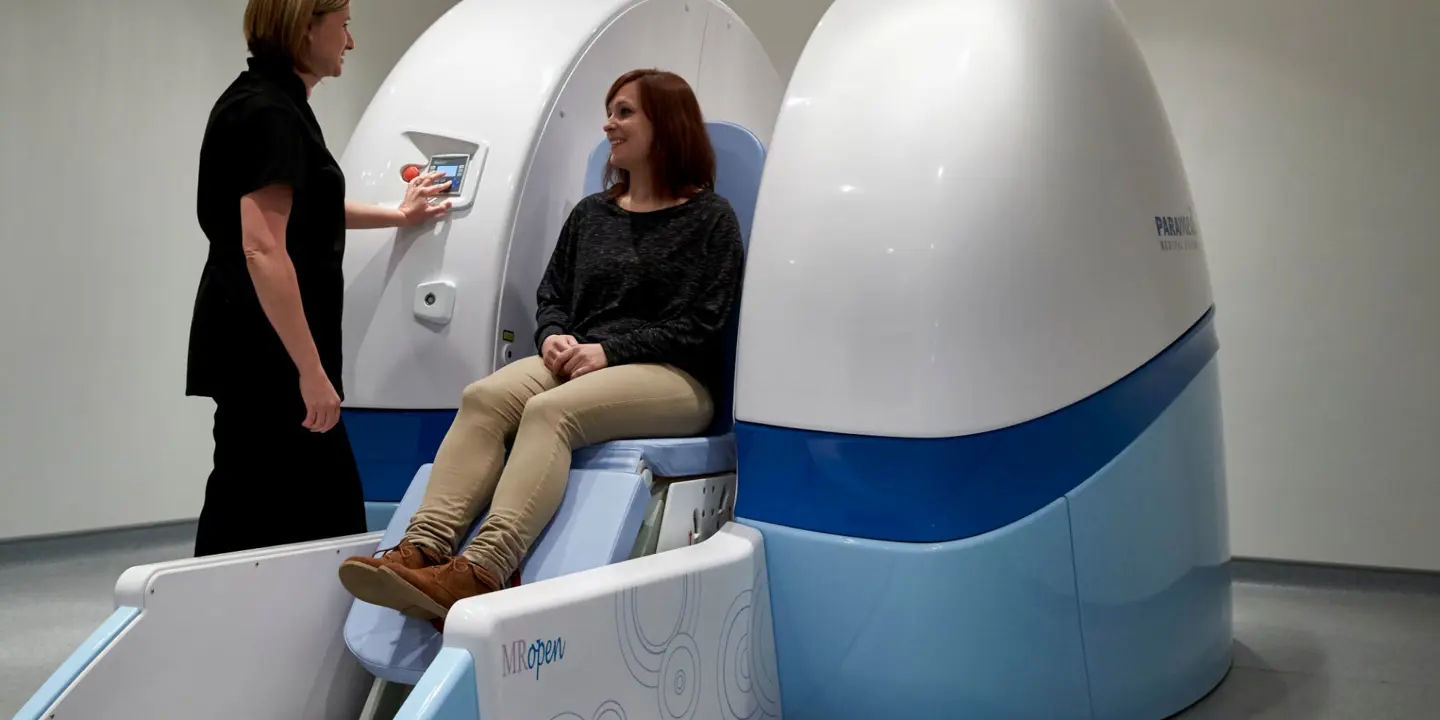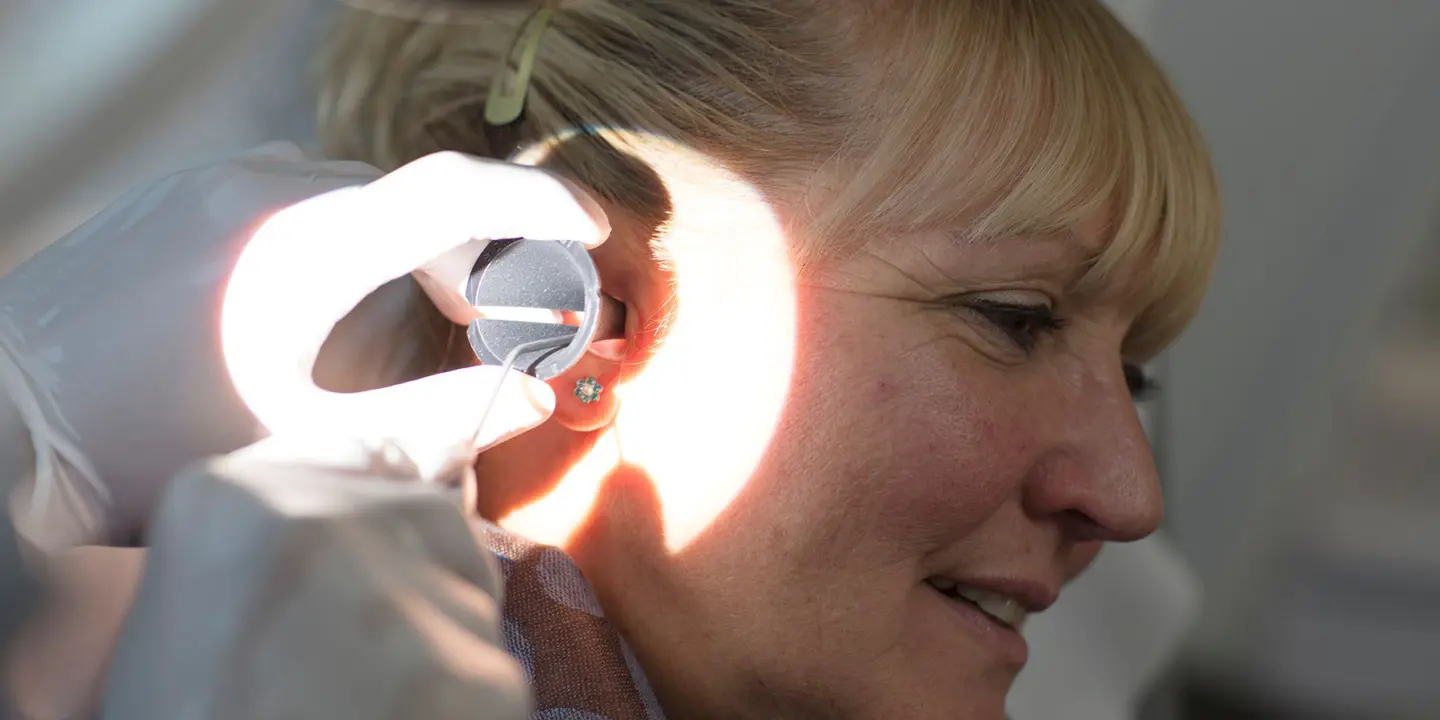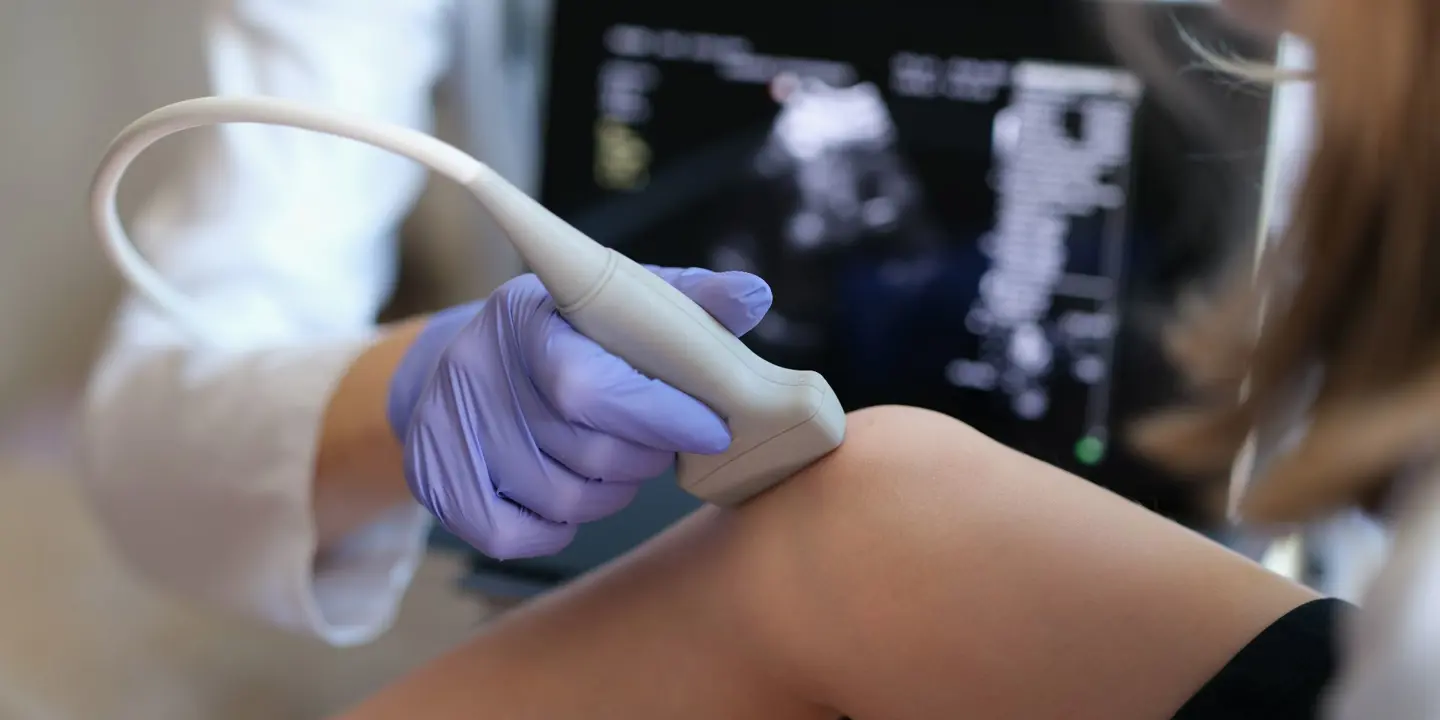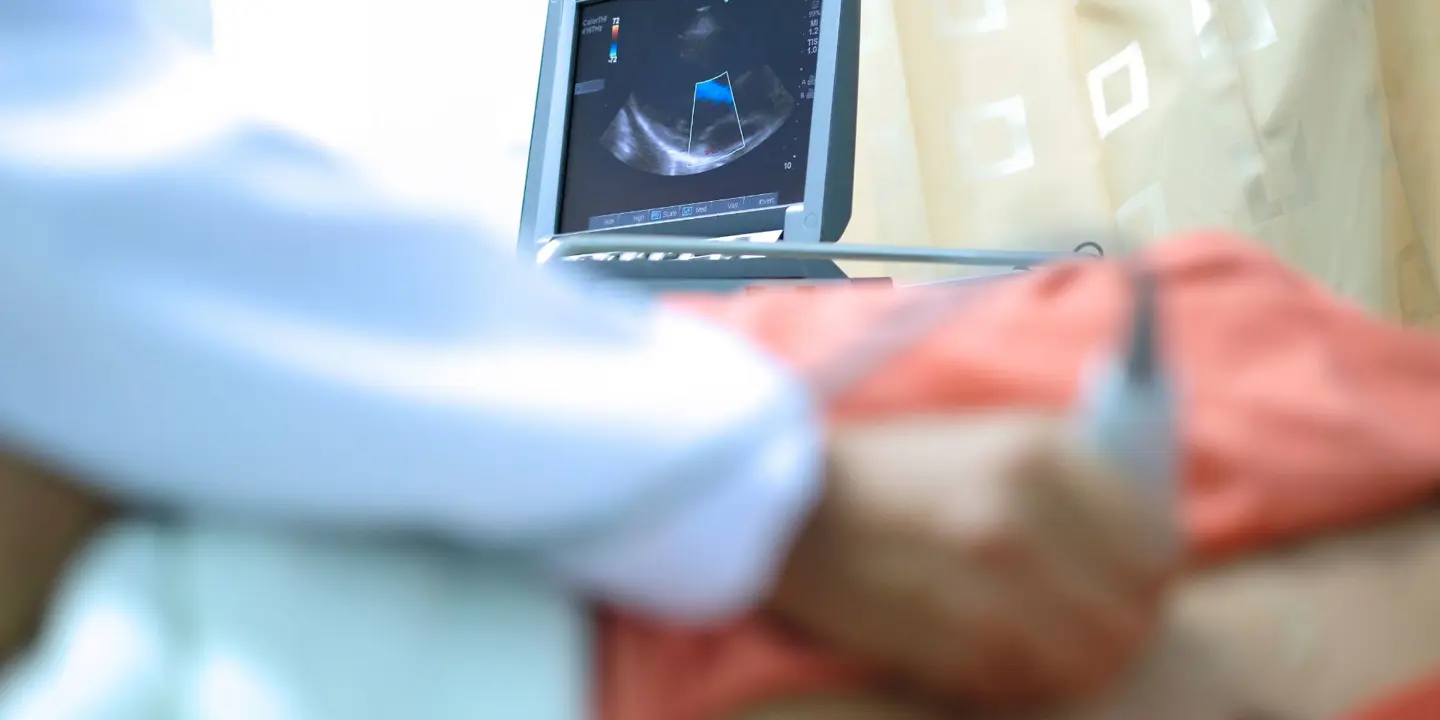Your back explained
The spine, split into the lumbar, thoracic, and cervical spine, interconnects the bones, joints, nerves, ligaments, and muscles which provides stability, strength, and flexibility. Your spine protects and supports your back. Your back consist of 24 distinct bones called vertebra, placed on top of each other. The bones in your sacrum and coccyx are behind the vertebrae, at the bottom of your spine.
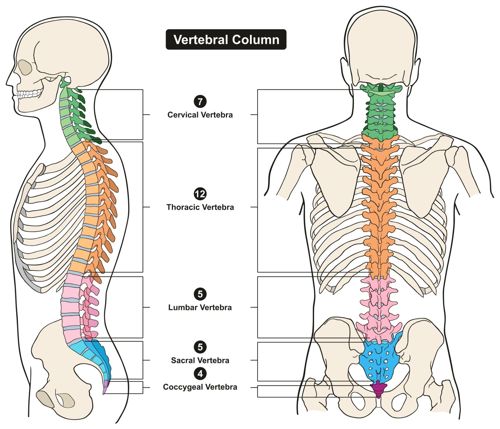
What are the causes of back pain?
There are many causes of back pain. In most cases, there is no specific reason for the back pain (non-specific back pain) and it is usually not serious. It may be caused by a simple strain of the muscles, tendons, or ligaments around your back.
Back pain can be caused by damage to sections of your spine including:
- A slipped (herniated) disc
- An injury such as a strain or a sprain
- Sciatica
- Poor posture
- Lifting something too heavy
Back pain conditions
There are a variety of conditions related to back pain:
- Slipped disc – Discs are cushions filled with fluid that sit in your spine between your vertebra and serve as a shock observer. When damaged, it can leak out and place pressure on the spinal cord and can cause sudden and intense lower back pain.
- Sciatica – Sciatica, also known as nerve root pain, causes about 1 in 20 cases of lower back pain. It occurs when your spinal cord nerve travels down to your leg (the sciatic nerve). Symptoms may include lower back pain, leg pain, tingling and numbness.
- Cauda equina syndrome – A severe but rare type of condition, resulting in compressed nerves in the lower back.
- Spinal stenosis – Spinal stenosis occurs in the lower back and neck and is where your spinal canal becomes narrowed and puts pressure on the nerves that travel through the spine.
How can an MRI help?
If you are suffering with back pain, you may require diagnostic tests including:
- An MRI scan
- An X-Ray
- An open MRI scan
No need for a GP referral
Receive an accurate diagnosis of your back pain
If you suffer from back pain, Vista Health allows you to get a full diagnosis when you need it the most. Take control of your health. Simply complete our self-referral form, make an enquiry or book an appointment online. After an accurate spinal diagnosis of back pain is found, you can begin a safe and speedy recovery.

